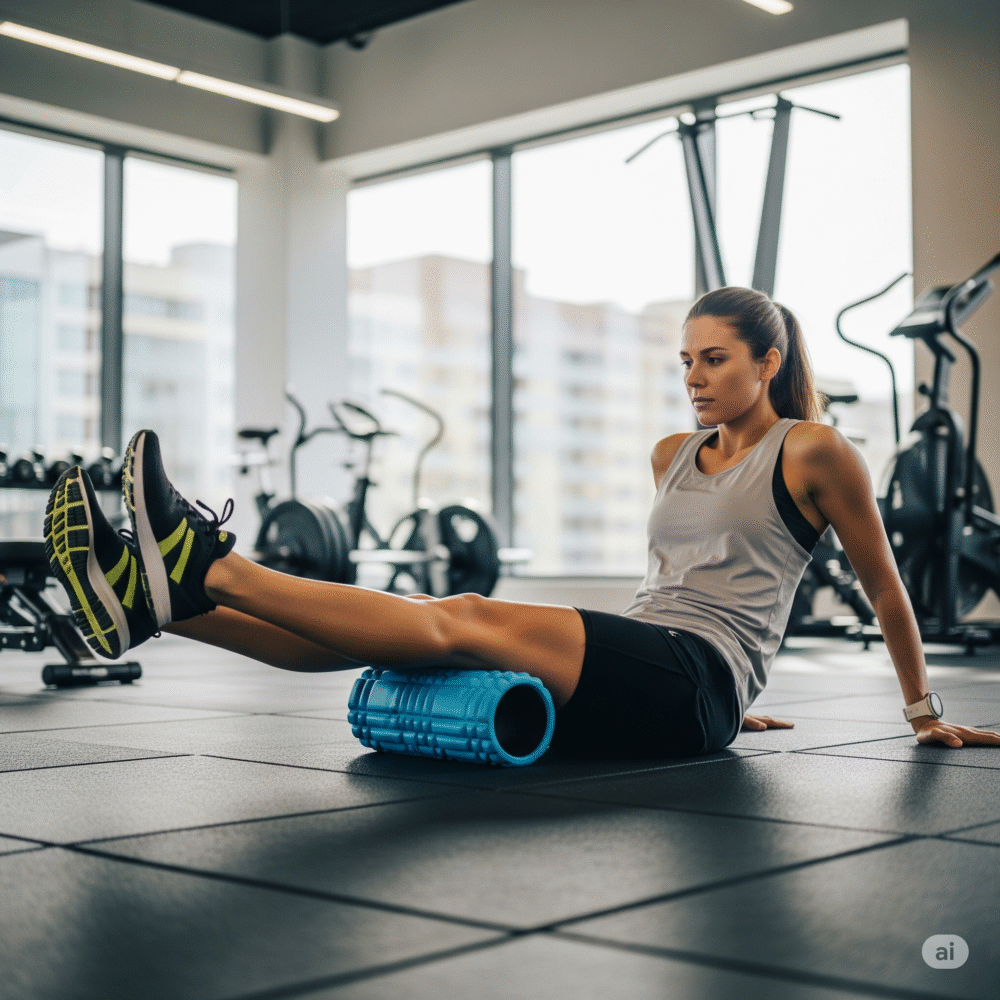Foam Rolling 101: Why It’s a Game-Changer for Runners
A runner foam rolling their quads after a long run
Unlock performance, ease soreness, and recover smarter – all with a simple foam roller.
For runners, staying injury-free and recovering well is half the battle. At RunPlayGo, we’re dedicated to supporting athletes not just with top gear but with knowledge that empowers performance. This guide breaks down the science and strategy behind foam rolling – a powerful recovery tool – and how it helps runners feel better, move better, and stay consistent. This article, authored by Dr. Paridhi Ojha, a former national-level tennis player and now a sports physiotherapist, explains why foam rolling is an essential part of every runner’s toolkit.
As a sports physiotherapist, I recommend runners integrate 10-15 minutes of targeted foam rolling into their routine – focusing on quads, hamstrings, calves, glutes, and the IT band immediately after runs to enhance blood flow, release muscle “knots,” and improve joint range of motion. By using slow, controlled movements and pausing on tight spots (without rolling over bones), you’ll accelerate recovery, reduce your risk of common injuries like shin splints and IT band syndrome, and maintain the mobility and resilience needed for consistent, pain-free training.

Top Benefits of Foam Rolling for Runners
- Reduces Muscle Tightness: Helps release knots and trigger points in the fascia.
- Increases Blood Flow: Promotes oxygen delivery and flushes out waste from worked muscles.
- Enhances Range of Motion: Loosens up stiff joints, especially around hips, quads, and calves.
- Accelerates Recovery: Speeds up the post-run healing process.
- Injury Prevention: Regular use helps avoid common running injuries like IT band syndrome or shin splints.
- Cost-Effective Recovery: One-time investment, long-term benefits – no expensive massage sessions needed.
How to Build a Foam Rolling Routine:
- Pre-Run (5 mins): Light rolling to warm up muscles and stimulate circulation.
- Post-Run (10-15 mins): Focused rolling on fatigued muscles like calves, quads, and glutes.
- Evening Wind-Down: Use foam rolling alongside stretching to relax tight areas.
- Weekly Deep Recovery: Dedicate a session to full-body foam rolling to aid flexibility and release chronic tightness.
- Invest in a high-density roller for better pressure and durability.
Why Runners Can’t Skip Foam Rolling
Incorporating foam rolling into your training routine might feel like a small change – but the benefits are massive. From easing sore muscles to preventing long-term injuries, this underrated tool is like recovery insurance for your running journey. At Runplaygo, we’re not just passionate about helping you find the right gear – we’re here to equip you with habits that build better, healthier athletes.
Whether you’re a weekend jogger or a marathon chaser, foam rolling gives your muscles the TLC they deserve. Stay consistent, stay mobile, and most importantly – listen to your body. Your foam roller might just become your favorite training partner.

